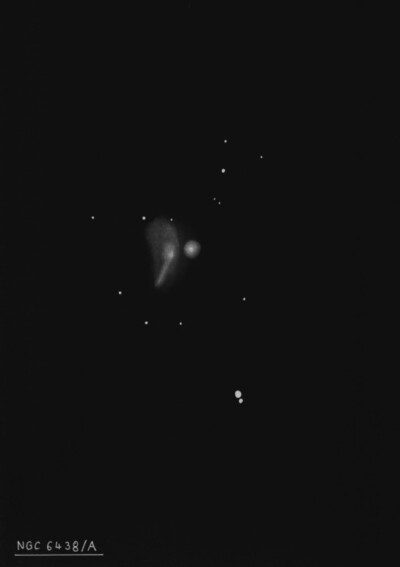
NGC 6438A appears highly disrupted on the DSS, with two extensions or arms (perhaps two different interacting galaxies).
John Herschel discovered NGC 6438 = h3701 on 2 Jun 1835 and logged "pB; R; vgbM. RA rudely taken, and may be very erroneous." His RA was 3 minutes of time too large, though this translate to only 3.6' in the sky at this far southerly declination.
Pietro Baracchi observed NGC 6438 on 3 Oct 1885 with the Great Melbourne Telescope and described a "Double nebula or a small round pretty bright, [?], pmbM almost to a star like nucleus, with faint roundish flat appendage south following about 40" in diameter which might be a close companion to [NGC 6438]." His sketch clearly shows a double galaxy with a bright, small nebula on the NW side (NGC 6438) and a larger, fainter glow (NGC 6438A) attached on the SE edge.
600/800mm - 24" (4/11/08 - Magellan Observatory, Australia): at 260x, the appearance of this interacting pair was very strange! NGC 6438 appeared moderately bright, small, round, 0.4' diameter. NGC 6438A (a disrupted peculiar galaxy) is attached on the east side and appeared as a faint, diffuse glow, elongated SW-NE, ~0.8'x0.5'. This system is the second closest NGC galaxy to the south celestial pole and is located 4' NE of a mag 9.5 star (an uncatalogued double star) and 16' NE of mag 8 HD 160820. Mag 6.4 HD 159517 is 28' NW.
Notes by Steve Gottlieb